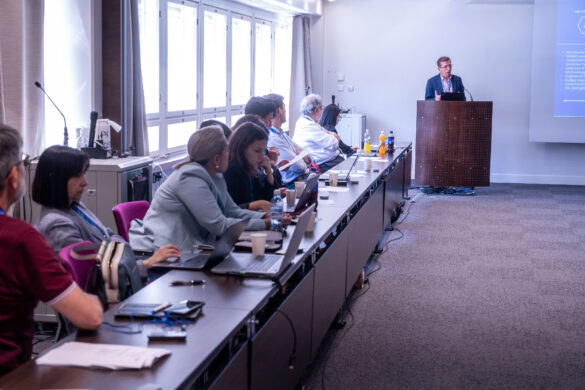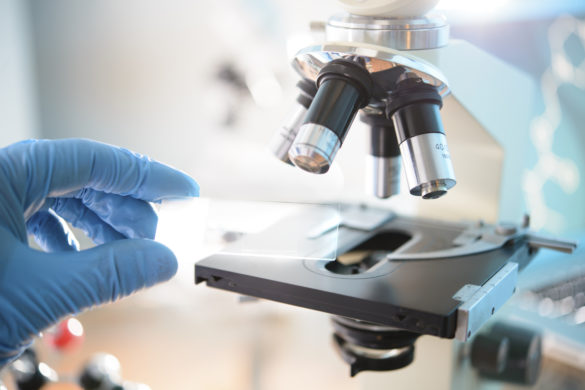
COVID-19 has swept across Europe and the world since the turn of the year, and resulted in this highly topical session being added to the virtual Congress programme 2020, as a further response to the pandemic. Reflecting the common challenges we all face, and the importance of international cooperation, this was a joint EAN/AAN session, chaired by Professor Claudio Bassetti and Professor James Stevens, the Presidents of our two Associations. Professor Stevens began by reporting the American response to the crisis with his lecture entitled: Neurological implications of COVID-19 in the USA. The first 41 cases were reported in Wuhan, China towards the end of 2019. By March 11 2020, COVID-19 was declared a pandemic, resulting in the current worldwide disruption, including cancellation of the 2020 AAN meeting (and conversion of the current EAN meeting to this virtual meeting with >30,000 registered delegates). Within weeks of the crisis unfolding, the AAN supported its 36,000 members by providing a new on-line COVID-19 resource for neurologists, and moved to on-line delivery of education. Recent developments have included AAN Science Highlights (access to the research abstracts accepted for the 2020 meeting), and interviews with neurologists from across the world. One hundred and thirty-four Covid-19 related articles were published open-access by the AAN within the first 6 weeks, and there are 22 podcasts available on the website. The AAN have advocated for telehealth promotion to the US Government, and provided Wellness resources for members. Free access to the 2019 meeting has been made available. Professor Stevens concluded by highlighting the importance of the existing partnership between the AAN and EAN.
Professor Elena Moro from Grenoble discussed the European experience and response. She started by considering the effect of different timing of containment measures in the various European countries, and then briefly discussed pathophysiological mechanisms and the neurotropic effects of COVID-19. Early papers from China reported 36% of patients experiencing neurological manifestations, which were more common in severe disease, and dizziness, headache and impaired consciousness were the most frequent symptoms. The EAN has set up an emergency task force in response to the crisis, who coordinated a survey of more than 4300 clinicians’ experience. Headache, psychomotor agitation, impaired consciousness, anosmia, dysgeusia and myalgia were the most frequently observed symptoms. Italy was affected particularly severely and early as the pandemic spread across Europe and resulted in the first registry being set up; further registries have now been established in countries across Europe including France, Spain, UK and Portugal. Stroke and encephalopathy were common in French patients and the Spanish registry included reports of COVID-19 detected in the cerebrospinal fluid of patients with neurological presentations. In the UK, from 153 reports, strokes and altered mental status including neuropsychiatric and cognitive disorders were frequent. In Portugal, neurological involvement was reported at high rates of greater than 40%, both in ambulatory and hospitalised patients. Further initiatives of the EAN task force have included rapid collation of management recommendations for patients with pre-existing neurological diseases in the context of COVID-19, put together by specialist scientific panels, and available on the EAN website (www.ean.org), and establishment of the ENERGY COVID-19 pan-European case registry of neurological complications of COVID-19.
In the final lecture of the session, Professor Ken Tyler from the University of Colorado considered neurological complications of COVID-19 in more detail. He started by pointing out similarities and differences between COVID-19 and previous SARS and MERS viral outbreaks. Neurological complications were recognised but less common in SRAS/MERS, occurring in 1:250 cases, but stroke, encephalopathy, Guillain-Barre syndrome were all reported. Disease mechanisms considered important, both in previous outbreaks and the current COVID-19 crisis, include indirect central nervous system (CNS) effects, direct CNS invasion, post-infectious/immune-mediated and other mechanisms. Indirect effects may include stroke, which occurred in 3% of COVID-19 patients in one study, usually in the context of severe infection. Strokes appear often large vessel, frequently with evidence of a hypercoagulable state, such as high D-dimer levels and positive lupus anticoagulant. MRI findings in patients with various neurological manifestations of COVID-19 also include cortical FLAIR signal changes, sometimes with accompanying white matter changes. Evidence for direct CNS effects first arrived in the form of a case report of meningitis/encephalitis. Nasopharyngeal swabs were negative but polymerase chain reaction (PCR) for COVID-19 was identified in the cerebrospinal fluid and there was radiological evidence of limbic encephalitis. However, viral PCR is often negative even in encephalopathy, and cerebrospinal fluid is often acellular, although minor elevations of protein may be seen. Post-infectious/immune-mediated effects of COVID-19 include descriptions of Gullain-Barre syndrome in patients with flaccid paralysis often with respiratory failure, 3 of which were axonal and 2 demyelinating on neurophysiology in the first 5 cases, with albumin-cytological dissociation evident in 3 cases. Cerebrospinal fluid PCR was negative. Anti-ganglioside antibodies have not been identified to date. Standard therapy with plasma exchange/intravenous immunoglobulin has generally been given, but a good response is not always seen. There is a single report of acute disseminated encephalomyelitis and cases of acute haemorrhagic necrotising encephalopathy are emerging; the first reported case had striking bilateral thalamic hyperintensity on MRI. An intriguing observation is the high prevalence of anosmia and dysgeusia, which may recover. Myopathy and rhabdomyolysis reports are emerging. Lastly, a Kawasaki-like multi-system inflammatory disease is becoming apparent, including in children, with rash, cardiac manifestations and meningeal symptoms, and it is possible that the phenotypic spectrum will continue to expand.













